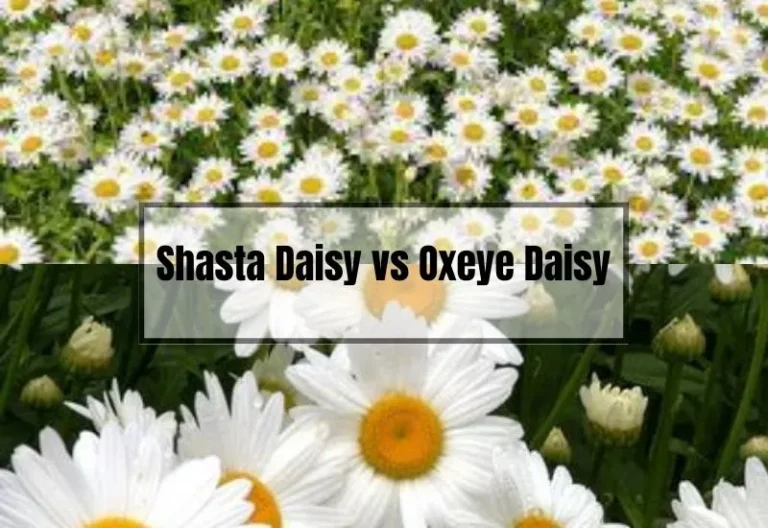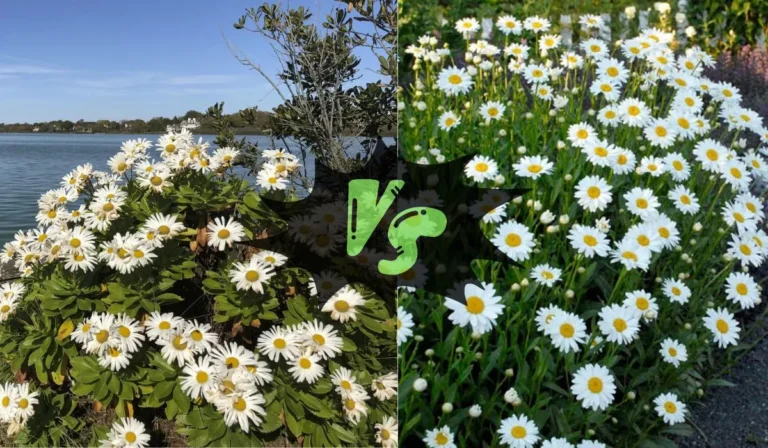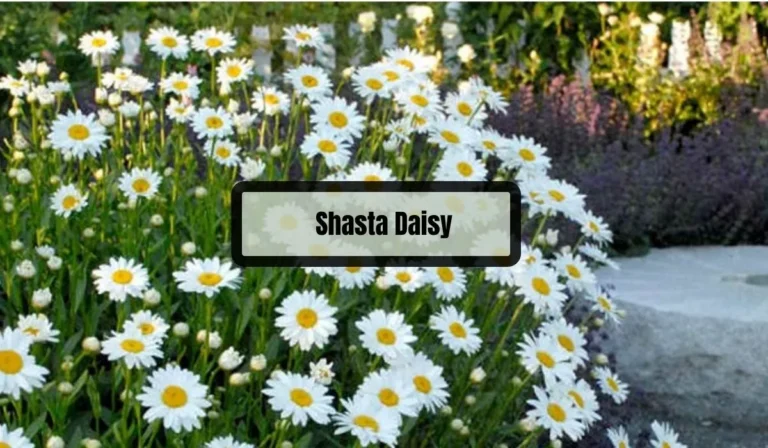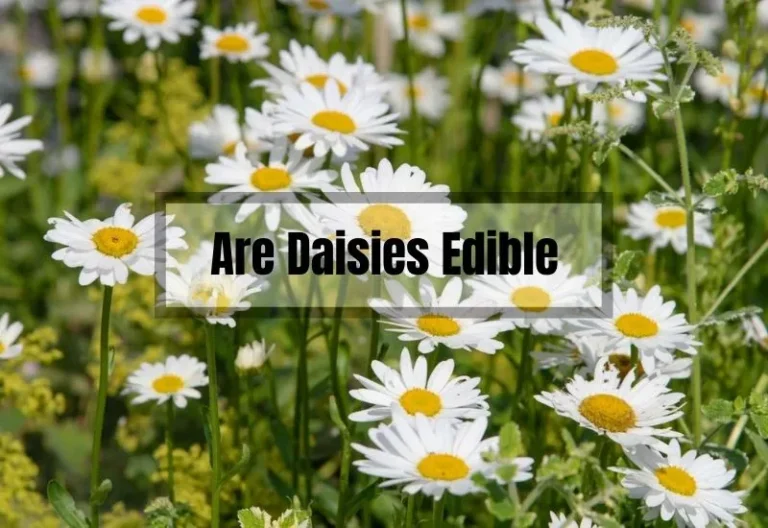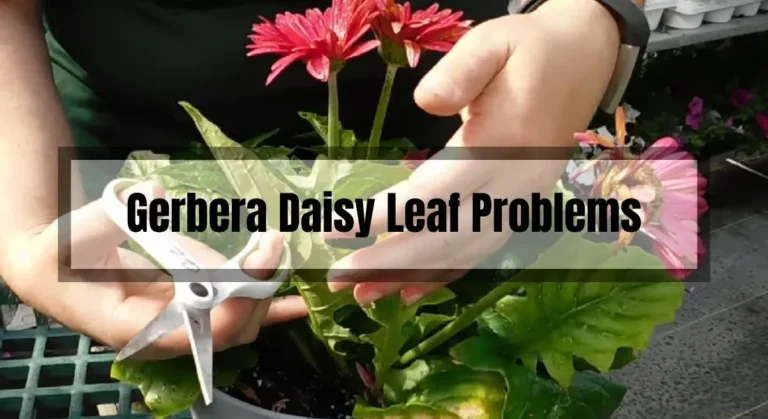Marguerite Daisy vs Shasta Daisy: Which One is Right for Your Garden?
Looking to add colorful blooms to your garden? Marguerite daisies and Shasta daisies are two popular choices, each with unique characteristics.
Marguerite daisies offer bright colors and a long bloom time, perfect for beginners. Shasta daisies, with classic white petals and yellow centers, attract pollinators and bloom prolifically in summer.
In this article, we’ll compare Marguerite and Shasta daisies, helping you make an informed choice for your garden, whether you’re a seasoned gardener or just starting out.
Key Takeaways
- Marguerite daisies are known for their bright colors and long bloom time, while Shasta daisies have classic white petals and yellow centers, and are hardy enough to attract pollinators to your garden.
- Marguerite daisies are easy to care for and great for beginners, while Shasta daisies are hardy and bloom prolifically in the summer months.
- Understanding the differences between these two types of daisies can help you choose the perfect one for your garden.
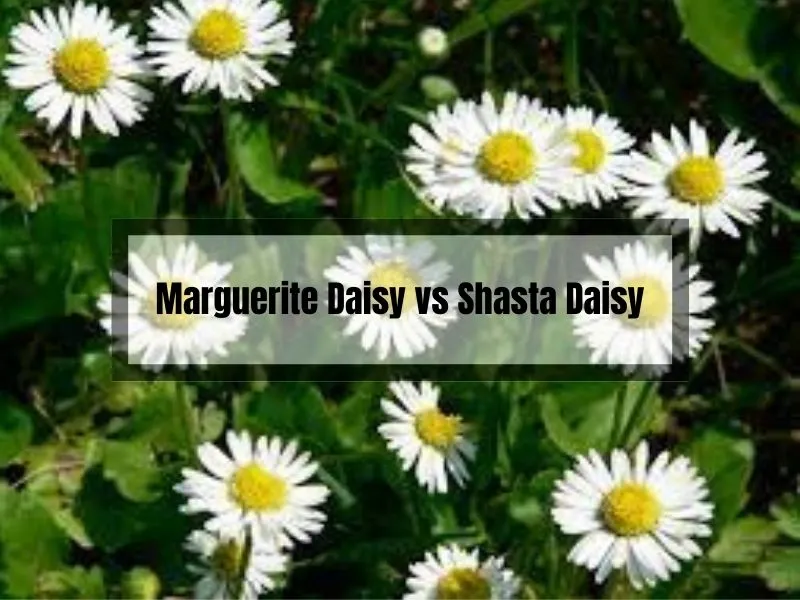
Marguerite Daisy vs Shasta Daisy
Are you looking to add some daisies to your garden but can’t decide between Marguerite daisies and Shasta daisies? Both types of daisies have their unique features, and it’s essential to know the differences to make an informed decision.
Characteristics of Marguerite Daisies
Marguerite daisies (Argyranthemum frutescens) are native to the Canary Islands and belong to the family Asteraceae. They have a bushy, compact growth habit and produce daisy-like flowers with a yellow center and white petals. Here are some characteristics of Marguerite daisies:
- Height: Marguerite daisies reach a height of 2-3 feet.
- Bloom Seasons: Marguerite daisies bloom best during spring and fall.
- Color Variety: Marguerite daisies come in a variety of colors, including pink, red, yellow, and white.
Marguerite daisies are easy to care for and can adapt to different soil types. They prefer well-draining soil and full sun to partial shade. They are also drought-tolerant and can survive in dry conditions.
Characteristics of Shasta Daisies
Shasta daisies (Leucanthemum x superbum) are a hybrid of several daisy species and were first developed in the early 1900s.
They have a clumping growth habit and produce large, white, daisy-like flowers with yellow centers. Here are some characteristics of Shasta daisies:
- Height: Shasta daisies can range anywhere from 1-4 feet tall.
- Bloom Seasons: Shasta daisies reach their peak in June and July.
- Color Variety: Shasta daisies are white with yellow centers.
Shasta daisies are also easy to care for and can adapt to different soil types. They prefer well-draining soil and full sun to partial shade. They are also drought-tolerant and can survive in dry conditions.
Marguerite Daisy vs Shasta Daisy
So, what are the differences between Marguerite daisies and Shasta daisies? Here’s a quick comparison:
| Marguerite Daisy | Shasta Daisy |
|---|---|
| Height: 2-3 feet | Height: 1-4 feet |
| Bloom Seasons: Spring and fall | Bloom Seasons: June and July |
| Color Variety: Pink, red, yellow, and white | Color Variety: White with yellow centers |
While both types of daisies have similar care requirements, Marguerite daisies are more compact and have a wider variety of colors. Shasta daisies, on the other hand, can grow taller and have larger flowers.
Understanding Marguerite Daisy

If you’re looking for a cheerful and easy-to-grow flower, you might want to consider the Marguerite Daisy. This lovely plant is known for its bright yellow or white flowers that bloom in late spring and summer, and it’s a great choice for gardeners who want to add a pop of color to their landscape.
In this section, we’ll take a closer look at this flower and explore its origin, characteristics, growing conditions, and maintenance requirements.
Origin and History
Marguerite daisies are native to the Canary Islands, which are located off the coast of Africa. The plant was first introduced to Europe in the 18th century, and it quickly became popular among gardeners due to its bright and cheerful flowers.
Today, Marguerite daisies are grown all over the world, and they are a favorite among gardeners who want to add a touch of sunshine to their yard.
Characteristics
Marguerite daisies are a type of perennial plant that can grow up to 3 feet tall and 2 feet wide. They have bright green foliage that is covered in fine hairs, and their flowers are typically yellow or white with a yellow center.
Marguerite daisies are known for their long blooming period, which can last from late spring to early fall. They are also very easy to grow and require minimal maintenance.
Growing Conditions
Marguerite daisies thrive in USDA growing zones 10-11, which are located in the southern United States and other warm climates around the world. They prefer well-drained soil that is rich in organic matter, and they should be planted in an area that receives full sun for at least 6 hours a day.
If you live in a place where it gets very hot in the afternoons during the summer, locate them where there’s afternoon shade to protect them from high heat.
Maintenance and Care
Marguerite daisies are very low-maintenance plants that require minimal care. They should be watered regularly, but be careful not to overwater them, as this can cause root rot.
Deadheading the flowers can help to promote more blooms, and you can also prune the plants back in the fall to encourage new growth in the spring. Marguerite daisies are also relatively pest-resistant, but you should keep an eye out for aphids, spider mites, and other common garden pests.
Overall, Marguerite daisies are a great choice for gardeners who want to add a cheerful and easy-to-grow flower to their landscape. Whether you’re a beginner or an experienced gardener, these lovely plants are sure to brighten up your yard and bring a smile to your face.
Understanding Shasta Daisy

If you’re looking for a classic daisy that can add a fresh and vibrant touch to your garden, Shasta Daisy could be a great option. This hardy perennial features white blooms and comes in a variety of plant sizes. Here’s what you need to know about this popular flower.
Origin and History
Shasta Daisy is a hybrid created from a cross between the oxeye daisy and three other wild daisies. The first Shasta Daisy was developed by American horticulturist Luther Burbank in the late 1800s.
Burbank named the flower after Mount Shasta in California, which is known for its snow-capped peak.
Characteristics
Shasta Daisy is a clump-forming perennial that typically grows 2 to 3 feet tall and 1 to 2 feet wide. The plant produces large, white, daisy-like flowers with yellow centers. The petals are typically arranged in layers, giving the blooms a full and fluffy appearance.
Growing Conditions
Shasta Daisy is a hardy perennial that can grow in a variety of conditions. The plant thrives in full sun but can tolerate partial shade. It prefers well-drained soil that is rich in organic matter. Shasta Daisy is also drought-tolerant and can handle dry conditions.
When planting your Shasta Daisies, search for areas with average to dry, well-draining soils. Good soil drainage is essential, as these plants steer clear of soggy or overwatered soil. Daisy flowers do well in full sun (> 6 hours sun).
Maintenance and Care
Shasta Daisy is a low-maintenance plant that requires minimal care. Deadheading spent blooms will encourage the plant to produce more flowers. In the fall, cut the plant back to a few inches above the ground to promote new growth in the spring.
Shasta Daisy is a hardy perennial that can be divided every few years to keep the plant healthy. To divide the plant, dig up the clump and separate it into smaller sections. Replant the sections in a new location or share them with friends and neighbors.
Comparison: Marguerite Daisy vs Shasta Daisy
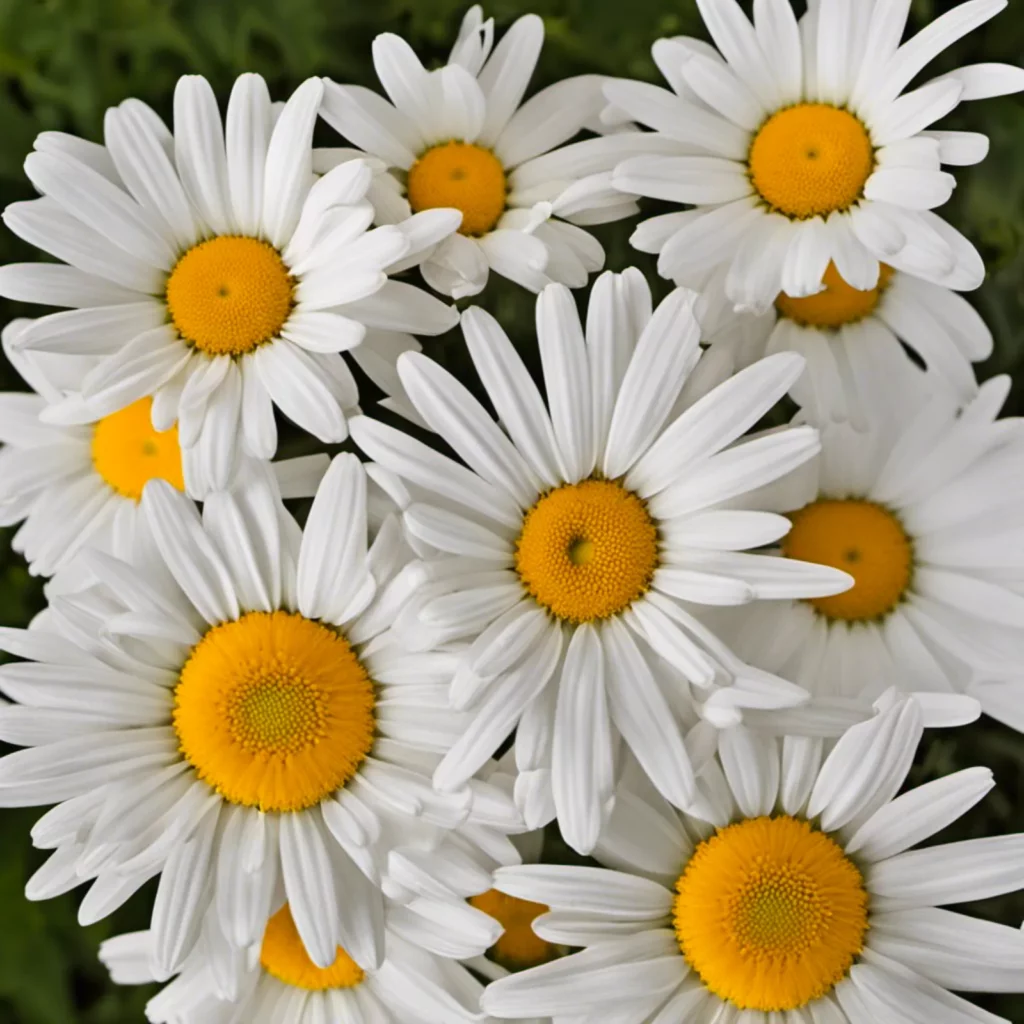
If you’re looking for a stunning, easy-to-grow daisy to add to your garden, you might be wondering which is better: Marguerite Daisy or Shasta Daisy.
Both of these daisies have their own unique features that make them stand out. In this section, we’ll compare these two daisy varieties based on their appearance, growing conditions, and maintenance.
Appearance
Marguerite Daisy and Shasta Daisy have similar daisy-like flowers, but there are some noticeable differences between the two.
Marguerite Daisy has a more delicate appearance with small, single flowers that come in a range of colors, including white, yellow, pink, and purple. On the other hand, Shasta Daisy has larger, more robust flowers with a bright yellow center and white petals.
In terms of height, Marguerite Daisy is shorter, reaching a height of 2-3 feet, while Shasta Daisy can grow up to 4 feet tall. Marguerite Daisy is an annual plant, while Shasta Daisy is a perennial, living for more than one season.
Growing Conditions
When it comes to growing conditions, Marguerite Daisy and Shasta Daisy have some differences.
Marguerite Daisy thrives in USDA growing zones 10-11, making it a great choice for warmer climates. Shasta Daisy, on the other hand, can grow in a wider range of zones, from 4-9.
Both daisy varieties prefer full sun and well-draining soil. However, Marguerite Daisy is more sensitive to cold temperatures and requires protection from frost.
Maintenance
Both Marguerite Daisy and Shasta Daisy are low-maintenance plants, but they have some differences in their care.
Marguerite Daisy requires regular deadheading to encourage more blooms, while Shasta Daisy can bloom continuously without deadheading. Shasta Daisy is also more drought-tolerant than Marguerite Daisy and can handle periods of dry weather.
When it comes to pests and diseases, both daisy varieties are relatively resistant. However, Marguerite Daisy is more susceptible to spider mites and whiteflies, while Shasta Daisy can be affected by powdery mildew.
FAQs
Can I grow Marguerite and Shasta daisies together?
Absolutely! Growing Marguerite and Shasta daisies together can create a stunning visual display in your garden. Just be mindful of their differing care requirements, and make sure to provide each variety with the specific conditions they need to flourish.
Are Marguerite and Shasta daisies deer-resistant?
While no plant is completely deer-proof, both Marguerite and Shasta daisies are considered deer-resistant. This means that, in most cases, deer are likely to pass them by in favor of other, tastier options.
Can I grow these daisies in containers?
Yes, you can grow both Marguerite and Shasta daisies in containers. Just make sure to choose a container with proper drainage holes and use well-draining potting soil to prevent root rot.
How do I deadhead Marguerite and Shasta daisies to encourage more blooms?
To deadhead your daisies, simply pinch or snip off the spent flowers just below the flower head. This will encourage the plant to produce more blooms and keep your garden looking tidy.
Are Marguerite and Shasta daisies suitable for cut flower arrangements?
Both Marguerite and Shasta daisies make lovely cut flowers, and they can brighten up any indoor space with their cheerful colors. They have a relatively long vase life, making them an excellent choice for bouquets and arrangements.
Conclusion
Choosing between Marguerite and Shasta daisies can be a tough decision, but now that you know their main differences and characteristics, you’re better equipped to make the perfect choice for your garden. Whether you’re looking for vibrant colors, unique cultivars, or low-maintenance blooms, both of these daisy varieties have a lot to offer.
When making your choice, consider factors such as your garden’s climate, soil conditions, and your personal preferences. And don’t be afraid to experiment with both types to discover which one works best for your garden. After all, gardening is all about growth and exploration, so why not have some fun with it?
Remember, there’s always room in your garden (and your heart) for more daisies. So go ahead and indulge in the captivating beauty of Marguerite and Shasta daisies, and watch as your garden transforms into a haven of happiness and delight. Happy gardening!
Related Posts:

